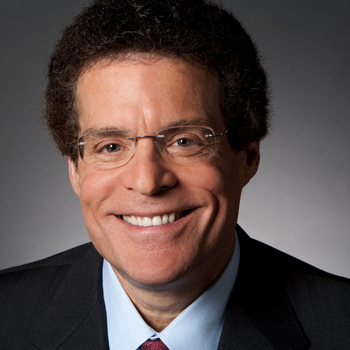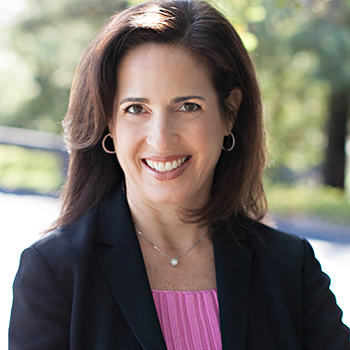With a cost of living more than three times the national average and average apartment rents of $3,548 a month, San Francisco is among the most expensive cities in the nation. Even highly compensated professionals working in the Bay Area choose to commute from more affordable places an hour or more away.
Office rents follow the same trend: CoStar says the city is the most expensive place to rent office space in the nation, though it projects those rents to fall this year for the first time in four years, to $63.80 per sq. ft.
Yet one respected national health care policy organization has chosen to move its HQ into the city — not far from the scenic vistas near the San Francisco Giants’ AT&T Park — and says the move will achieve cost savings. What? Where are they from — Silicon Valley?
Well, yes.
Earlier this month, the Henry J. Kaiser Family Foundation (KFF) — a non-profit focused on health policy analysis and journalism — moved into its new headquarters on Berry Street in the city’s China Basin from its previous digs at the Quadrus development on Sand Hill Road in Menlo Park. In a phone interview, KFF President and CEO Dr. Drew Altman says the organization’s former home, where the foundation was based since it took modern-day form in the early 1990s, became a trophy property by accident of history.
“That was principally an investment property, part of our investment portfolio, which we also lived in,” he says of the nine-building Quadrus complex. KFF derived no particular benefit from being in Silicon Valley. “It’s not a great place to bring people together on the types of policy issues we focus on,” he says. “It’s a hard place to recruit a diverse staff, which is an issue for tech companies in Silicon Valley too. Our agenda is different. Many of our employees already lived in the city.”
Three years ago, for completely unrelated business reasons, says Altman, the KFF team decided the time was right to sell the Quadrus complex.
“We had our own feelings about Sand Hill Road, and wanted to diversify our real estate holdings,” he says. The property was sold in two installments: The first half went to a partnership between Canada’s Public Sector Pension Investment Board and REIT DivcoWest Real Estate Services, and the other half was sold to the University of California pension fund.
According to the City of Menlo Park’s financial statements, Quadrus Sand Hill LLC was second only to Facebook in property tax payments in FY 2015-2016, paying on taxable assessed value of $235 million. The city’s total assessed valuation rose from $8.3 billion in 2006-2007 to $13.4 billion in 2015-2016.
“Those were very beneficial sales for us,” Altman says, “but we no longer were owners living on our own property, and were all of a sudden living on one of the most expensive properties in the US, if not the world. So we began to think about the possibility of being elsewhere.”
‘Confluence of Influences’
Altman helped launch the foundation 25 years ago, and so is always thinking about the best strategy for the organization’s future. KFF’s only other site is in DC, where it eventually built its own building and moved in. The thought was to replicate that in the Bay Area, and a large derelict property near the port looked promising, “but it would have taken too long, working through red tape with the Port Authority,” Altman says.
The KFF team was surprised to find, with the help of JLL Senior Vice President Cara Trani, the attractive space to lease on Berry Street. “Other than our inability to buy it, she thought it had a lot of things we were looking for,” says Mollyann Brodie, senior vice president for executive operations at KFF, who also serves as executive director for public opinion and survey research and was charged with leading the relocation project. “It’s near public transportation. We wanted a space large enough to have private offices, but also have a conference center, so we could offer it for other non-profit groups as a community benefit.” Mission Bay and UCSF are nearby, part of what Brodie calls “an intellectual confluence of influences.”

The property was the Goldilocks option, she says. “It was just right. Now that we’re here, I feel that way more than ever, and it’s pretty spectacular at that. PBI, BCJ and the team really made this work. I know they listened to us so carefully and got our vision, and were ale to translate that into architecture and a building, without breaking a budget. It’s probably one of the best work environments I could imagine.”
KFF made the move to the city for two reasons, “first and foremost because we thought it was more consistent with our values, in a busy urban neighborhood, and second, we think we can be much more effective bring people together to debate and discuss issues in the substantial space we have built here,” Altman says of the meetings KFF convenes with participants from across the US.
Altman says his organization is “idiosyncratic” and therefore might operate in a different fashion from a corporation. But one other factor in the location decision was aligned with corporate trends today: the migration toward talent. He calls KFF staff experts “our principal asset,” and says the new HQ gives that staff “a better shot at recruiting the kind of expert and diverse staff we want to have than we did in Menlo Park.”
Ultimately around 100 people will work at the new location, where KFF has signed a 10-year lease with two 10-year options to renew. Altman says staff feedback was sought throughout the process, and the workspace design is a happy medium between open office and offices with doors, so those involved in heavy-duty number crunching and analysis can have some measure of privacy. But the walls only go part of the way up, so that when standing, staff get breathtaking views of the ballpark and the bay.
“We need head-down quiet space,” explains Brodie. “A tech design with big open workspaces doesn’t work for a group of researchers. So everybody does have private offices. When you’re sitting, you have a fairly quiet space, but if you use the standing desk, all of a sudden, you have glass walls with views.”
As for the cost savings, Altman says the “unusual circumstances” of leaving Sand Hill Road mean potential cost reductions of between 30 percent and 40 percent.
Even so, he says, it wasn’t easy leaving after 28 years. The move disadvantages a small number of staff living on the peninsula — including him. “My wife and I have not moved, so I’m commuting from Menlo Park,” he says, where his commute used to be two minutes. Now it can range from 35 minutes to an hour and a half, depending on when he drives. So he tries to start his day at 6:30 a.m., which benefits his daily interactions with the East Coast and the rest of the world.
There was one other thing KFF had to leave behind. The Anderson Collection is one of the outstanding private collections of 20th century American art. More than two- thirds of the collection is on view at Quadrus. Asked if any of the collection made the move, Altman says, “I tried, but the Andersons wanted to keep it close.” Altman himself was close to Harry W. “Hunk” Anderson, who passed away in early February at the age of 95. He was a major donor to Stanford University, where a new building was recently constructed for the collection.
High-Cost For a Reason
Were any other locations ever in the mix for the foundation? Altman says a fundamental strategic decision for KFF was to remain a West Coast/Bay Area organization with a significant Washington presence “but not ever become a Beltway organization. Sure, theoretically, there were a few other places we could have gone — Oakland, but we didn’t want to risk the confusion with Kaiser Permanente, with whom we have no connection. We could have gone to a suburb, but the city seemed like a logical place to us,” primarily due to the high value placed on staff expertise.
Brodie’s expertise is greatly valued on the national and global scale when it comes to public opinion research and health policy, so heading up the headquarters relocation effort was a side gig at best. But her performance “was beyond belief,” Altman says, working alongside a project team headed largely by women, “which we liked because our workforce is predominantly women.”
Brodie also found the process rewarding, partly because of the powerfully aligned teamwork. The project team included JLL; architecture, planning and interior design firm Bohlin Cywinski Jackson; Principal Builders; and construction management firm Bradac Co., led by Amy Bradac. “Without them, I never could have survived,” says Brodie. “They acted on my behalf, knew what they were talking about, and helped be my translator.”

And even with costs as high as they are, the Bay remains a draw.
“I was born and raised in the Bay Area, so I am used to this insane market,” says Brodie, who is not related to legendary San Francisco 49ers quarterback John Brodie. “It definitely is a factor for people. But we were already in the Bay Area. Because there are more varied housing options, most of our staff did live in San Francisco and the East Bay. Some folks are commute losers because they were down in the San Jose area, but most are living here and are commute winners. Prices here are literally insane when I think about what my little house is worth. But there’s a reason people live in the Bay Area. It has a lot of things to offer, and San Francisco is a very vibrant city that does have, while not enough, at least variation in housing options. Young people can live with roommates and afford to live here, whereas in a place like Silicon Valley without apartment complexes, tech companies have to get buses to get people to work. It’s false to say the cost of living is not an issue for companies in the Bay Area. But we’ve always had a strong commitment to the area.”
Asked for her thoughts on how the general health and well-being of an area’s population can figure into organizational site selection, she says, “I’m looking out at a trail by the Bay, and at least seven people are out running in the middle of the day … We want to be in a place where people want to live.”

